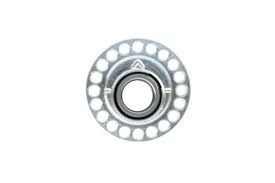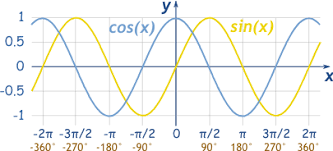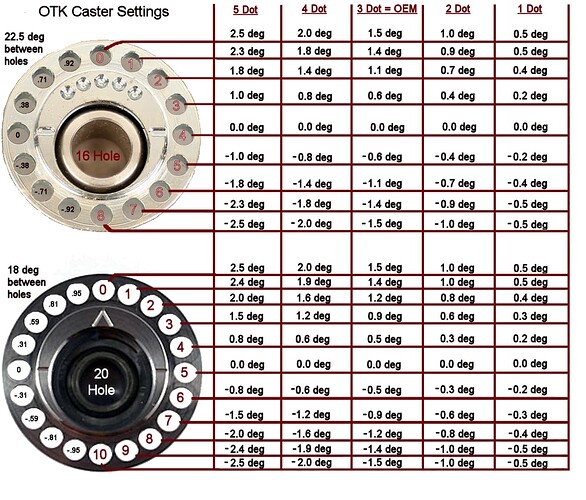Recently, during some testing and calculations I did, I came across a very interesting behavior regarding how the eccentric pill (caster washer) works adding/removing caster and camber degrees depending on the region of the washer we are using. In
this experiments I used a 1.5-degree adjustment range with 20 different rotation positions.
At first glance, it might seem that each slight rotation of the pill — for example, from one position to the next — results in a proportional change in both caster and camber. But what I discovered is that this variation is not linear — and that significantly changes the way we should interpret and use this kind of adjustment on the track.
To make it easier to understand, imagine the eccentric pill as a circular piece with an off-center hole that rotates around a fixed axis. As you rotate it, the point where the kingpin sits also moves — and that movement changes the wheel’s angle in two different directions: longitudinal (affecting caster) and lateral (affecting camber).
What’s curious is that depending on the starting position of the pill, each step in rotation has a very different effect:
![]() Near the position where caster is at its maximum or minimun, a small rotation to the next position results in a significant change in camber, while the caster changes very little. To give you an idea, at this point, the adjustment adds 0.47 degree of camber, but only around 0.07 degrees of caster.
Near the position where caster is at its maximum or minimun, a small rotation to the next position results in a significant change in camber, while the caster changes very little. To give you an idea, at this point, the adjustment adds 0.47 degree of camber, but only around 0.07 degrees of caster.
![]() On the other hand, when you’re rotating the pill near the position of maximum or minimun camber, the opposite happens: the caster change becomes much more significant, reaching 0.47 degree per step, while camber changes very little, about 0.07 degrees.
On the other hand, when you’re rotating the pill near the position of maximum or minimun camber, the opposite happens: the caster change becomes much more significant, reaching 0.47 degree per step, while camber changes very little, about 0.07 degrees.
This happens because of the circular path traced by the off-center hole of the eccentric pill. The displacement caused by rotation does not always go in the same direction. In some positions, the movement is more “vertical”, affecting camber more; in others, it’s more “horizontal”, affecting caster more. And in between, there are transitional points where both angles change more equally.
It’s important to note that all of these results were obtained considering the rotation of only one eccentric pill (either upper or lower). If both pills — the upper and the lower — are rotated, the resulting changes in caster and camber can be either intensified or neutralized, depending on the direction of rotation.
This finding is very useful because it shows that, when adjusting the pill, the effect you’ll get on caster and camber depends directly on the position the pill is in at the time of the adjustment — not just how much you rotate it. That can really help when fine-tuning the kart’s behavior on the track, especially when you’re looking for specific responses in low or high-speed corners.
Below you can find a table with degrees added/removed in both directions (longitudinal and lateral) at every small rotation of the washer.
| Washer Position (clockwise rotation) |
Caster added/removed |
Diference to previous position |
Camber added/removed |
Diference to previous position |
|---|---|---|---|---|
| 1 - Maximun Caster | 1,50 | 0 | ||
| 2 | 1,44 | -0,07 | -0,47 | -0,47 |
| 3 | 1,22 | -0,22 | -0,89 | -0,42 |
| 4 | 0,89 | -0,33 | -1,22 | -0,33 |
| 5 | 0,47 | -0,42 | -1,44 | -0,22 |
| 6 - Minimum Camber | 0,00 | -0,47 | -1,50 | -0,07 |
| 7 | -0,47 | -0,47 | -1,44 | 0,07 |
| 8 | -0,89 | -0,42 | -1,22 | 0,22 |
| 9 | -1,22 | -0,33 | -0,89 | 0,33 |
| 10 | -1,44 | -0,22 | -0,47 | 0,42 |
| 11 - Minimun Caster | -1,50 | -0,07 | 0,00 | 0,47 |
| 12 | -1,44 | 0,07 | 0,47 | 0,47 |
| 13 | -1,22 | 0,22 | 0,89 | 0,42 |
| 14 | -0,89 | 0,33 | 1,22 | 0,33 |
| 15 | -0,47 | 0,42 | 1,44 | 0,22 |
| 16 - Maximun Camber | 0,00 | 0,47 | 1,50 | 0,07 |
| 17 | 0,47 | 0,47 | 1,44 | -0,06 |
| 18 | 0,89 | 0,42 | 1,22 | -0,22 |
| 19 | 1,22 | 0,33 | 0,89 | -0,33 |
| 20 | 1,44 | 0,22 | 0,47 | -0,42 |


